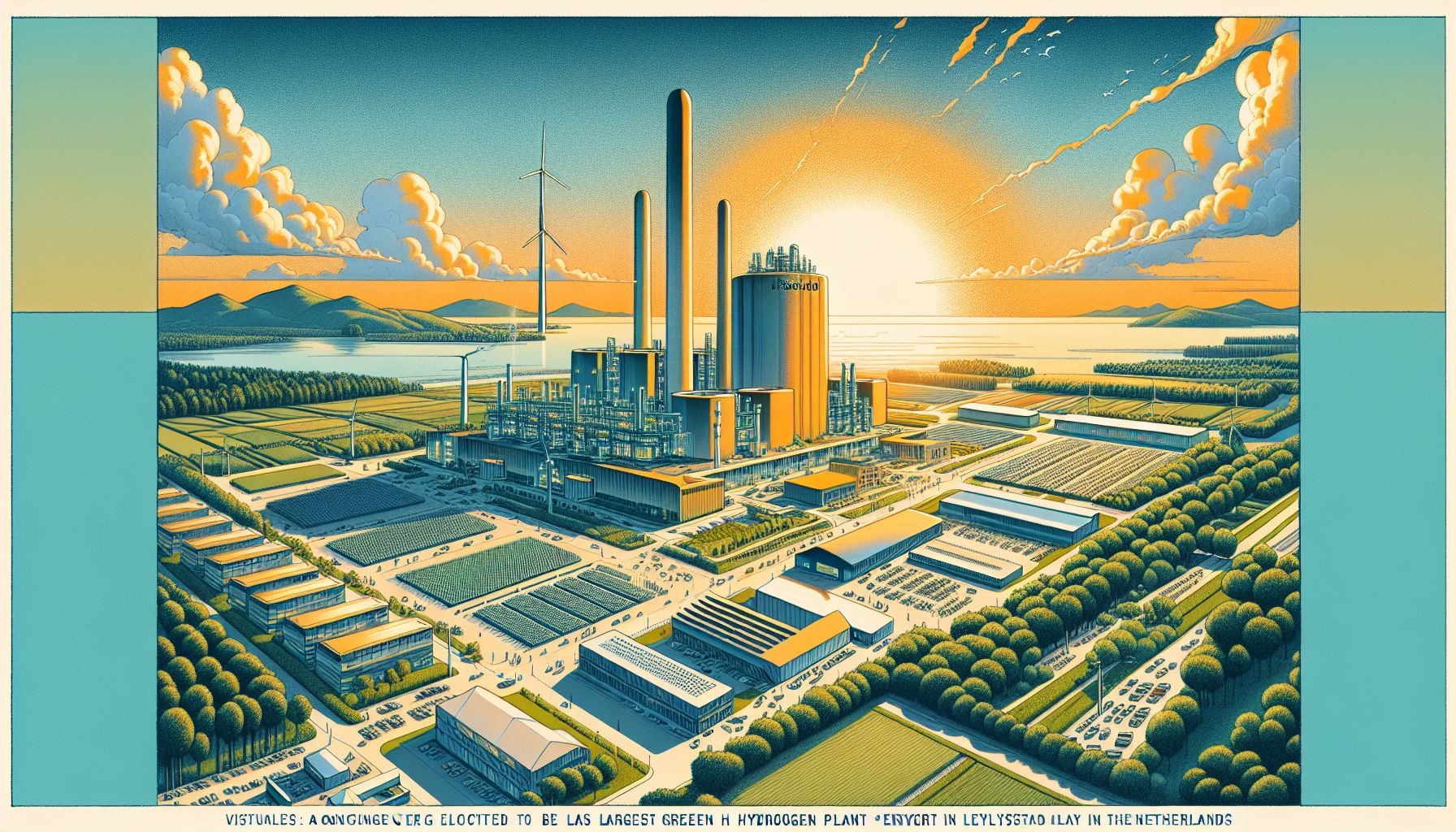Lelystad Set to Host Netherlands' Largest Green Hydrogen Plant

Lelystad, Wednesday, 30 October 2024.
Essent and Circul8.energy plan to build a 20-megawatt electrolyzer in Lelystad, potentially becoming the Netherlands’ largest green hydrogen production facility. Powered by wind and solar energy, the project could scale up to 105 megawatts by 2026, marking a significant step towards sustainable energy solutions in the region.
A Strategic Location for Green Innovation
Lelystad, situated in the province of Flevoland, has been strategically chosen for this groundbreaking project due to its robust renewable energy infrastructure. The region is recognized for its abundant wind and solar resources, making it an ideal candidate for hosting the Netherlands’ largest green hydrogen facility. This initiative is part of a broader regional strategy to develop a ‘Hydrogen Valley,’ aimed at leveraging these resources to foster green hydrogen production and distribution. The project’s modular design allows for a future expansion to a 105-megawatt capacity, potentially producing approximately 11,000 tonnes of green hydrogen annually[1].
The Partnership Driving the Project
The collaboration between Essent and Circul8.energy underscores a pioneering effort in transitioning to green energy within the Netherlands. By utilizing a 20-megawatt electrolyzer, these companies aim to convert excess solar and wind energy into green hydrogen. This clean and sustainable alternative to fossil fuels minimizes carbon dioxide emissions, typically associated with conventional hydrogen production processes. The electrolyzer works by splitting water into hydrogen and oxygen, a process that when powered by renewable sources, significantly reduces the carbon footprint[2].
Economic and Environmental Impact
The establishment of this green hydrogen plant is expected to have substantial economic and environmental benefits. Economically, it positions Lelystad as a leader in the renewable energy sector, potentially attracting further investment and creating jobs in the region. Environmentally, the shift to green hydrogen as a fuel source represents a crucial step towards reducing reliance on fossil fuels, thereby contributing to national and global efforts to combat climate change. The facility is expected to be fully operational by the end of 2026, marking a significant milestone in the journey towards a sustainable energy future[3].
Future Prospects and Expansion Plans
The project’s potential to scale up to 105 megawatts by 2026 highlights its future prospects and adaptability. Such expansion would not only increase hydrogen production but also enhance the facility’s role in meeting the energy demands of the region and beyond. This aligns with the broader European strategy to increase green hydrogen production, thereby supporting the EU’s climate goals and reducing greenhouse gas emissions. As the project progresses, it will likely serve as a blueprint for similar initiatives across Europe, demonstrating the viability and benefits of integrating renewable energy sources into large-scale hydrogen production[1].

